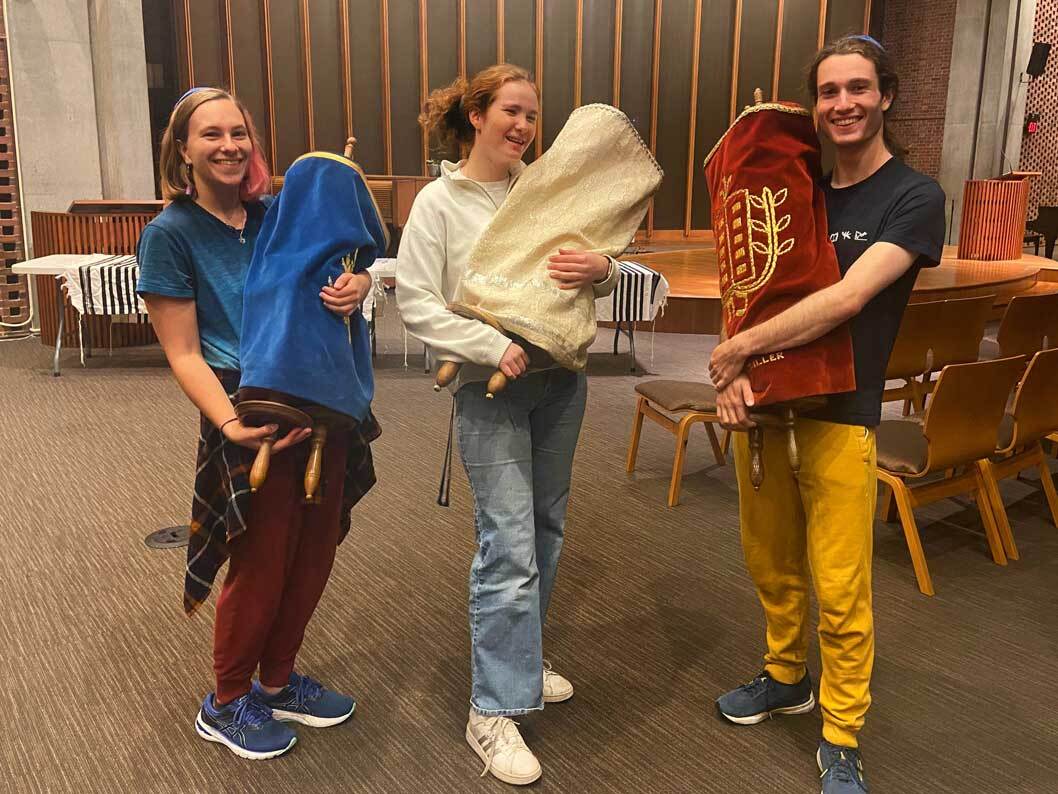Memorial Torah Scroll
URochester Hillel is honored to be the trustee of Memorial Scrolls Trust (MST) scroll #988. This scroll comes to us from Domazlice, a town in the Plzen Region of what is now the Czech Republic.

History & Geography
Domazlice is located approximately 84 miles from Prague. It was established during the mid-13th century, and until 1918 the region was part of the Austro-Hungarian Empire; after World War I and until 1933 it was part of the Republic of Czechoslovakia.
Between the 14th century until the middle of the 19th century, when the Jews of the Austro-Hungarian Empire were emancipated, no more than three Jewish families were permitted to live in Domazlice. It was only after 1848 when the residence restrictions on Jews were lifted, that Jews from neighboring villages began settling in the town.
During the 1860s a Jewish religious society was formed, and a cemetery was established; the religious society would eventually be recognized as the governing body of the organized community and the cemetery would be in use until 1941. The community built a synagogue during the 1880s. In 1921 there were 108 Jews living in Domazlice; by 1930 that number had dropped to 69.
The Holocaust
Following the Munich Agreement of September 1938, about a year before the outbreak of World War II, the Republic of Czechoslovakia was disbanded and the Nazis took control of the Sudeten region. Beginning in March 1939 Bohemia and Moravia were occupied by Nazi Germany and became a protectorate of the Third Reich, which was the start of a period of discrimination and violence against the Jews who remained there. By the end of 1942, most of the Jews remaining in Domazlice had been concentrated in the Terezin (Theresienstadt) Ghetto. From there they were deported to concentration and death camps, mostly in Poland, where most were killed.
The synagogue of Domazlice was destroyed by the Nazis. However, before the Jews of the town were deported to Terezin, 20 documents and 461 ritual objects were transferred to the Central Jewish Museum in Prague.
MST received 27 scrolls from Domazlice, which was a "collection point" to which other small communities sent their artifacts for onward delivery to Prague in 1942. Many of the scrolls must have come from surrounding villages, as there were never more than 90 Jews in this town given its proximity to the German border; it was especially antisemitic with only 4 Jewish families allowed to live there in 1850.
London & Beyond
In 1963, the Artia, a company run by the Czech Communist government, approached Eric Estorick, an art dealer who frequently visited Prague, to buy paintings for his Grosvenor Gallery in London, to ask if he was interested in buying some Torah and other scrolls. He approached a client, Ralph Yablon, who discussed the situation with Harold Reinhart, Rabbi of the Westminster Synagogue.
Chimen Abramsky, Professor of Hebrew and Jewish Studies at University College, London was tasked with examining the scrolls in Prague and reporting on their authenticity and condition. Upon receipt, Ralph Yablon generously agreed to fund the purchase of 1564 scrolls that arrived in London in February 1964. Nobody was aware that the Czechs had previously, unsuccessfully, offered to sell the scrolls to the Israeli government
The Memorial Scrolls Trust has allocated Czech scrolls to synagogues and organizations around the world. The scrolls are never sold or donated but allocated on loan. Communities that close or merge with other Czech scroll-holder communities are obliged to return their scroll to the Trust.
We are so grateful to have this meaningful and historic scroll as part of our Hillel at the University of Rochester community. It is a reminder of how fortunate we are to live freely and safely as Jews, and of the importance of celebrating and perpetuating Jewish traditions, culture, and heritage long into the future.